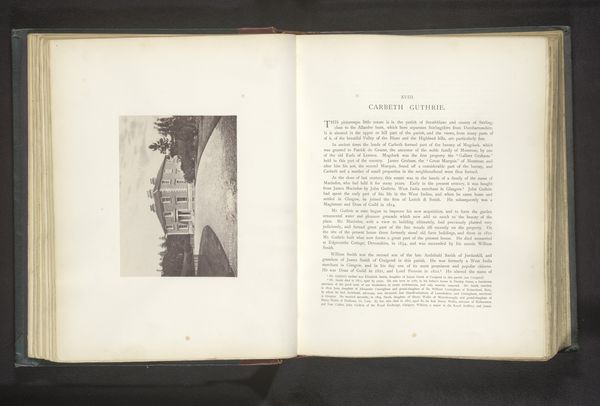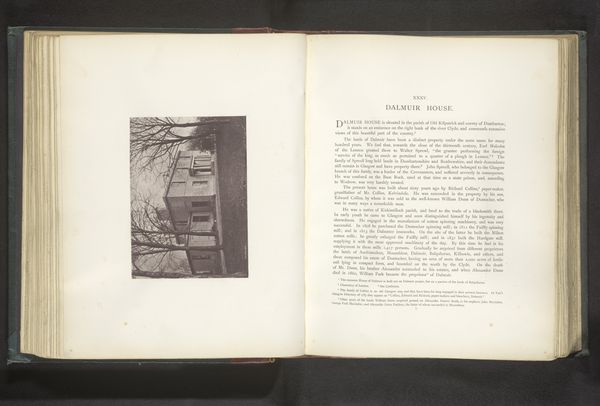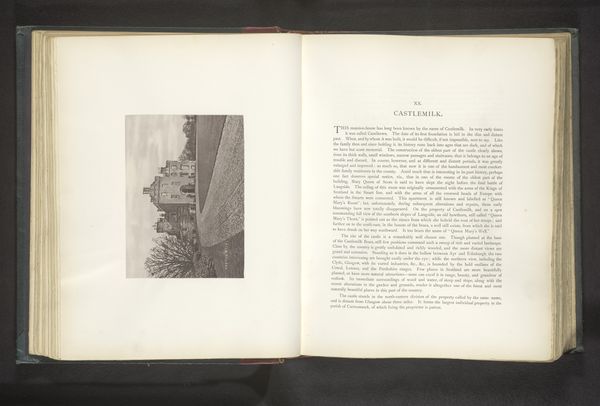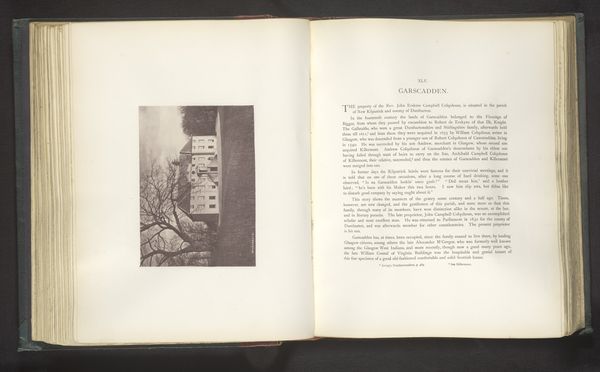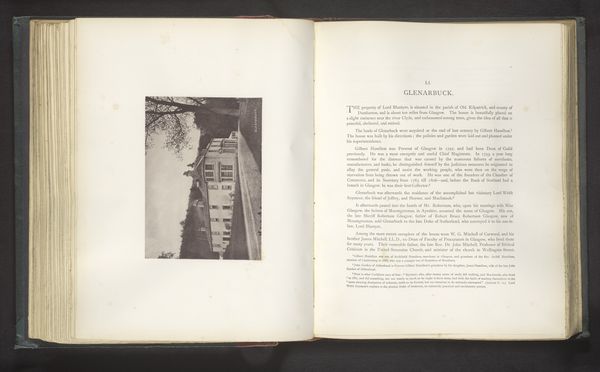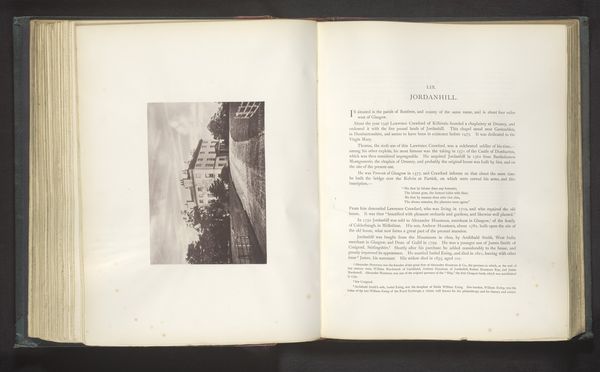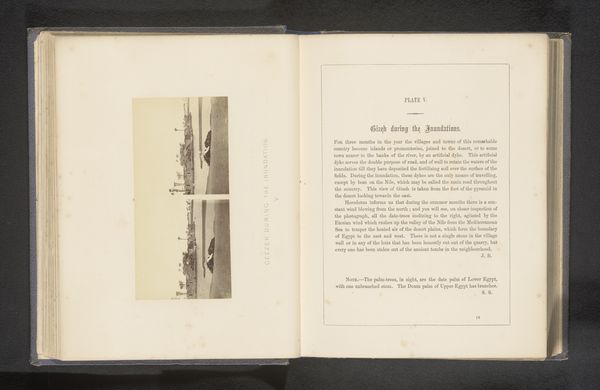
print, photography, albumen-print
#
portrait
# print
#
landscape
#
photography
#
cityscape
#
albumen-print
#
building
Dimensions: height 115 mm, width 160 mm
Copyright: Rijks Museum: Open Domain
Curator: Thomas Annan, the artist, crafted this piece titled "Gairbraid," sometime before 1878. It's an albumen print, presented in an open book showcasing its rich photographic details alongside written text. Editor: My first impression is quiet and contemplative. The tonal range in the photograph is subtle and it feels like a ghost from the past. Almost like staring at an old daguerreotype, with that eerie clarity. Curator: Absolutely. Annan was very intentional about that effect. It wasn’t just about documenting a building; it was about imbuing it with a certain weight, a connection to its history. Albumen prints offered a particular aesthetic, enhancing that dreamlike quality. Editor: And, I think what strikes me here is the choice to frame it within the book itself. Placing the photograph on the page as part of this volume suggests something very deliberate about preservation and about memory-keeping. We’re not just viewing a photograph; we’re accessing a relic that carries a narrative weight. Curator: Exactly. Annan's project often explored the social landscape alongside the physical one. The architectural studies were entwined with broader narratives of Glasgow's transformation and industrialization. “Gairbraid” can also speak to Annan's interest in local histories and how institutions are entangled in broader narratives. He also created several more albums, focusing on a series of institutional constructions of Glasgow at the time, like the University. Editor: That context does add depth. The photo speaks about power structures and social identity as it pertains to urban settings. Do you think there's something about his perspective as an artist during this era that emphasizes such concerns? Curator: Oh, undeniably. There was this consciousness emerging— photographers and artists of the time wanting to engage in social critique by utilizing photography as a means to explore a new visual language, if you will. They weren't just passively capturing images; they were very carefully constructing ways of seeing and ways of remembering. Editor: So, in revisiting "Gairbraid", I sense Annan's call to attention as well. His subtle artistry provides an intriguing lens through which we are allowed to access layers of architectural memory in this photographic archive. Curator: Yes, what I see here is that it embodies so much history but in a very beautiful form and its relationship with institutional memory of that area and time. It beckons.
Comments
No comments
Be the first to comment and join the conversation on the ultimate creative platform.


